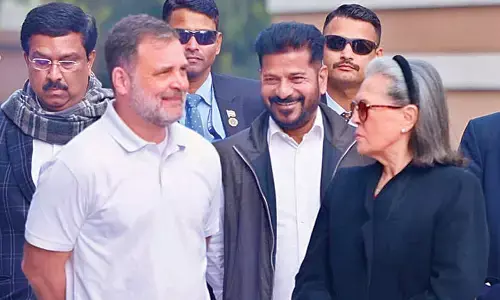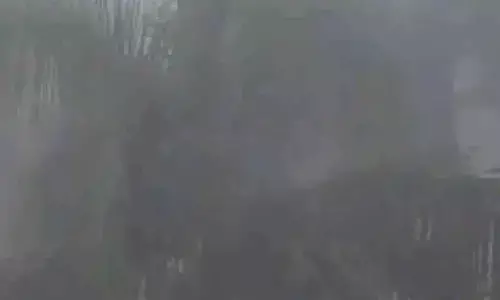Pulichintala finally becomes a reality

Pulichintala Finally Becomes a Reality, Pulichintala Irrigation Project. K L Rao-Pulichintala Irrigation Project, which was commenced in 2004, is scheduled to be inaugurated by Chief Minister N Kiran Kumar Reddy on December Saturday.
Hyderabad: K L Rao-Pulichintala Irrigation Project, which was commenced in 2004, is scheduled to be inaugurated by Chief Minister N Kiran Kumar Reddy on December Saturday.
The multi-purpose project is meant to serve irrigation needs, generate hydro power and help in flood control. It is a crucial irrigation facility for farmers of four coastal districts of West Godavari, Krishna, Guntur and Prakasam where it would provide irrigation facilities to 13.08 lakh acres. The project was first designed with 33 gates, but was later reduced to 24 gates with balancing reservoir having a capacity of 45.77 tmc ft.
The project plan was first conceived in 1911 by British engineer Col Ellis and the peasants organisations made several appeals to take up the project since then. The foundation stone was laid by the then Chief Minister, N T Rama Rao, on November13, 1988, at a projected cost of 188 crores but works were not commenced due to various reasons, including budget and technical. It was the first project to start under the ambitious Jalayagnam in the year 2004-05.
The state government had first given an administrative approval for Rs 681.604 crore. Later it gave a revised administrative approval for Rs 1281 crore. Again in August 2009 it revised the estimate to Rs 1831 crore. Which means that the project cost went up by Rs 1150 crore. The Irrigation Pulichintala Project was designed to construct across the river Krishna at Pulichintala village, Guntur District. The project is aimed to create and stabilise an irrigated potential of 13, 08,849 acres in the districts of Krishna (6,79,498 acres), Guntur (4,99,231 acres), Prakasam ( 72,120 acres), West Godavari (58,000 acres).
The project progressed at a snail’s pace due to various hurdles including legal battles. Another reason was the company that had bagged the contract, Srinivasa Construction, postponed the construction seven times, in May and December in 2008, June in 2010 and June in 2011 because of legal battle including revision of the project cost and non-obtaining of environmental clearance.
The contractor commenced work on October 22, 2004. On November 11, 2004, the AP High Court directed the government not to take up the work until environmental clearance was obtained.
The work of the project stopped from November 22, 2004, to June 11, 2005. Subsequently, the Ministry of Environment and Forest accorded environmental clearance on June 9, 2005. The government has accorded extensions several times to the project. It has given another extension up to December 31, 2013, to complete the final touches.
The state government planned to inaugurate the project on August 15, 2013, and Chief Minister had announced the date. With this, the officials had set for the contractors an ambitious target of completing the dam to the non-over flow (NOF) level of 36 feet by August 15, 2013, but it was not completed on time.
The project had become essential for stabilising the Krishna delta as it would be acting as a balancing reservoir with its 45.77 tmc capacity to sustain 13.08 lakh acres of the ayacut. The rehabilitation and relief works witnessed tardy progress and reconstruction of submerged villages was not completed so far. Interestingly, the officials have been still paying land compensation though it was started in 2006.
Interestingly, a total of 28,446 acres including 14,530 in Guntur and 13,915 acres in Nalgonda district would be submerged under the project. But, the officials had acquired 27,424 acres so far and efforts are on to acquire1021 acres. The works such as earth work excavation, embankment dam and cement concrete works were still pending. The officials erected 24 gates and the work of fixing motors to two gates is under progress. The head works of the project were carried out with additional items such as Double Line Bridge instead of Single Line Bridge.
As per the performance audit of the project, it is estimated that about Rs 808.8 crore would come as revenue every year crops and producing of 120 MW power.
It is also assessed that 3.43 lakh tons of food grains would be yielded under the project ayacut. It is also planned to develop pisciculture in the reservoir to give an additional income.
Next Story







